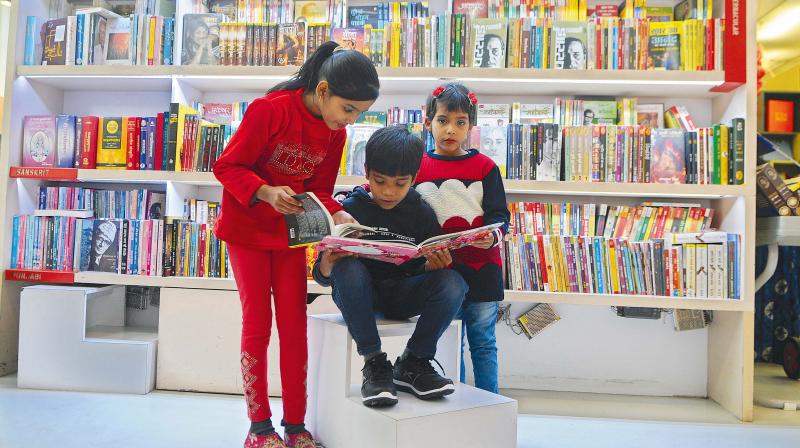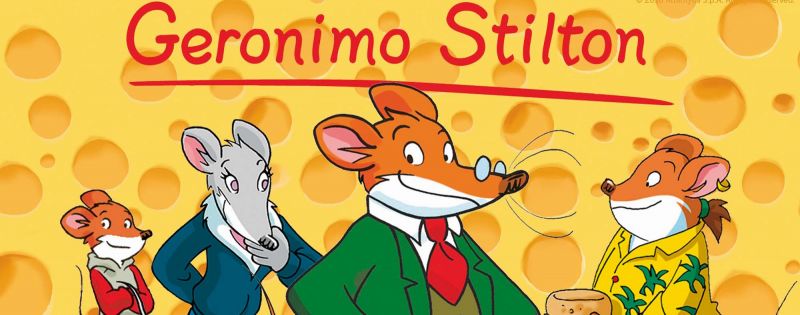Watch Your Child Lead (Oops... Read!)

How I would love to be the Indian child today! To be able to enter bookshops stocked with the latest releases from all over the world. To be able to buy books online and excitedly open the package the very next morning! To watch television series and 3-D movies, which bring to life my imagination of the written word. I can listen to authors and storytellers at bookshops and schools, regaling me with animated or live, dramatised versions of their stories. I can now read books that are shorter and written in simple language in fun fonts, supported by cool illustrations and pictures. I can devour and resonate with these stories that seem connected to my life. And the best part is that they finally have a sense of humour that I completely relate to.
Today’s child is a tough customer. He knows what he wants. If he does not get it, he can do without it; but he will not settle for something else. He is amazingly wired to be able to choose with clarity in this new world of unlimited options. Just as he does not respond well to instructional and overbearing parenting, he tolerates no didactic or preachy reading.
Authors who are smart enough to understand and feel the pulse of the evolving child, have made the adjustments in today’s storybooks; and it’s their books that stand out in bookshop displays.
A seven to 12-year-old (the age when the child starts making choices outside parental influence) heads straight to pick up a Diary of a Wimpy Kid, Geronimo Stilton, Harry Potter or a Percy Jackson. The days when Enid Blyton filled rows and columns of bookshelves seem to have given way to a new selection of reading. This is much to the disappointment of parents who grew up on a diet of picnics and innocent mysteries on islands, with children setting out on independent adventures to shipwrecks and enjoying high tea with cakes and scones. What changed?
Our children did. The times they grow up in did. Their family dynamics did. Their exposure did. And how!
“Children today are very well informed and need stimulation. The attitude of the elders tutoring them has gone. The young know a lot and the fact that wisdom should pass on from the parents to the child is not a necessary or relevant attitude in today’s times. An author cannot talk down to a child. We have to learn with and from the young mind. Authors who bring out the child in them to connect with the child in the reader are the ones that succeed with today’s generation of young readers,” observes eminent author Namita Gokhale, illustrating her point in her latest book Lost in Time: Ghatotkacha and the Game of Illusion, a story from the time of the Mahabharat, through the lens of a child from today.
“The whole world is changing. We are becoming more cynical. India is becoming more affluent, with more and easy access to books and the Internet. Parents have outsourced parenting to nannies, cooks and drivers. They are becoming increasingly indulgent of children to compensate for less time spent with them owing to their careers. All this impacts the children’s needs and their reading habits. An author today has to try to understand the needs of children, rather than trying to instruct them or reform them and turn them into an ‘adarsh balak or balika’ who does as the parents tell him or her to do,” says author and mythologist Devdutt Pattanaik, whose latest series of children’s books, including The Boys Who Fought, have Gods come down in everyday situations and hold the kids’ hands to show them stories from the sacred Puranas, Ramayan and Mahabharat. These ancient stories are retold with evocative illustrations to suit dilemmas that children experience and identify with.
Maybe we should take a step back and get a broader perspective of ‘reading’ in today’s times. For earlier generations, books were the only form of reading. They were the main form of knowledge and entertainment before the advent of TV. Also, earlier generations of Indian readers read what they got, mainly books written by British authors. With time, devices and the explosion of media, American authors, animation, movies, websites and children’s workshops all fight for the child’s attention. Obviously, the ones that connect best to the child’s psyche at a point in time sell the most.
The child does not need to see through his parent’s eyes anymore. Advertising and promotion reaches him directly. Writing also needs to continuously evolve, as children evolve. And this medium will change as dynamically as movies, restaurants and post-school workshops do. It will have to keep up with and constantly makeover to suit changing taste and interests. Enid Blyton held the reader’s attention and sustained for decades. Who knows about today’s authors? Maybe a decade or two? Maybe that will shorten too, as interest-spans shorten.
 The days when Enid Blyton filled rows and columns of bookshelves seem to have given way to a new selection of reading.
The days when Enid Blyton filled rows and columns of bookshelves seem to have given way to a new selection of reading.
“Books are just one means of telling a story. Today we should not get fixated at ‘reading’ being the only method of telling or listening to a story. We should appreciate other modes such as live storytelling, TV, animation, etc., which use the same content — story-delivery. Children should be encouraged to read, not as a forced activity, but as a subtle emulation of watching their parents enjoying the same activity themselves. And parents need to loosen up and be open to other channels of story-receiving by their children. It is the content that matters at the end of the day — the mode of delivery will keep changing,” says Roopa Pai, author of the bestseller The Gita For Children.
Ishwar Sarda, a teenager and an avid reader throughout his childhood, feels that books read by the earlier generation get boring due to fewer and outdated style of pictures and illustrations. Children prefer more reality-based stories. His twin Eshan, an equally voracious reader, feels that illustrations over text, weird fonts, a large font size, shorter books, comfortable language and style of the currently popular authors, agree with today’s generation, who do not connect with shipwrecks and islands. They live in cities with smartphones and are familiar with Times Square and Facebook. They like to read books that are set in these times with real people. Percy Jackson, for instance, shows that children with disabilities can be special. The series recognises the complicated family dynamics of today. The Diary of a Wimpy Kid has a geeky kid learning to relate to his peers. He is a normal, flawed child. It doesn’t get more real than that!
Books that have movies and TV shows based on them further promote sales and popularity. “Children watch my TV show Devlok which makes them seek out my books,” says Pattanaik.
We notice more and more mythological books with simple stories from our rich culture adorning bookstore shelves. However, 70-80 per cent of sales are in the western popular category. “The exotic and foreign will always remain attractive and hence those books sell. Mythological stories for children is not a new trend. These stories have lasted for five thousand years and represent stories of our land. They are rooted in solid values and have eternal appeal. It is just the packaging that has changed,” explains Pai.
She adds, “It does not matter what a child reads as long as he is reading and the parent is aware of what he is reading. Visual stimulation through storytelling is as good as reading. Stories should leave them with something to think about. Their choices should be without parental biases and should have shades of grey. They should be nuanced stories. There is certain snobbery around reading which is unnecessary.” We couldn’t agree more.
Preeti Gupta is the founder of VocaBOOM, (www.vocaboom.in) a vocabulary enrichment programme for children, franchised across over 40 Indian cities.

